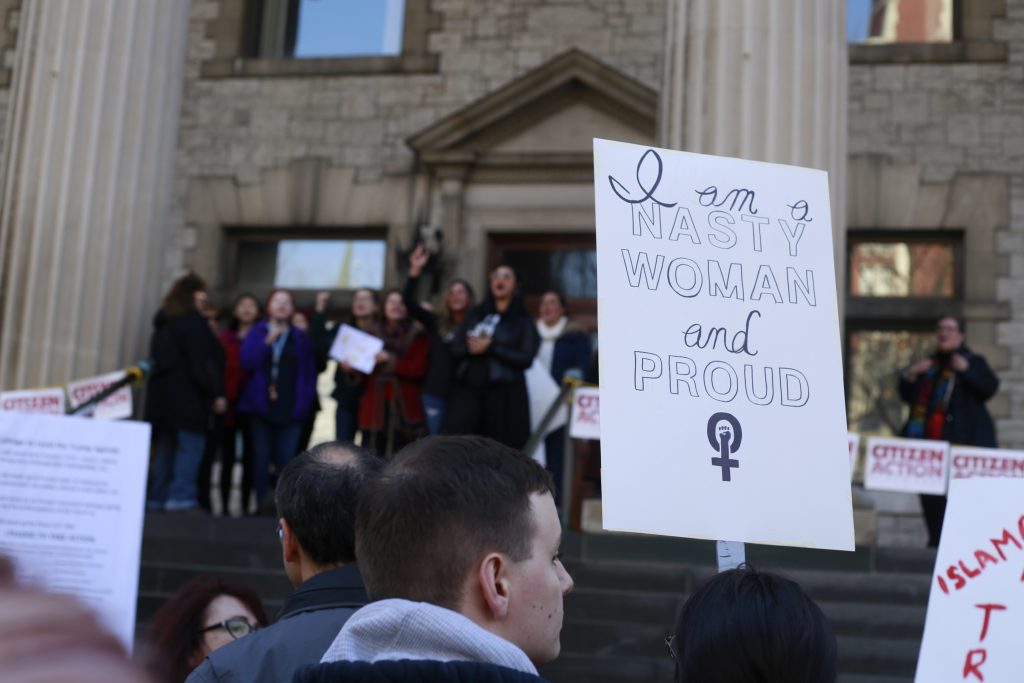
More than 2,000 people participated in the Women’s March on Binghamton in January, alongside over 600 sister marches happening around the world. Now, Binghamton University Libraries is creating a collection of artifacts from the march to preserve this local historical event.
The project was started by Yvonne Deligato, BU’s archivist and local history curator, and Nancy Abashian, the assistant librarian for women, gender and sexuality studies. According to Abashian, the library chose to take on the project because it demonstrates a link between the University and both local and global communities, and it adds to the library’s already rich local history collection.
“It was a world wide movement,” Abashian wrote in an email. “To be a part of that is immense. To preserve that for the history of the University, and the greater Binghamton Community is important in telling this story for researchers and future historians.”
The library has begun collecting digital artifacts, such as photographs, video and audio clips, through an online portal accessible to the public on the library’s website. Abashian and Deligato then work with the people who submit items to catalog the artifacts with all necessary information for context. So far, pictures have been collected from Binghamton residents who attended marches in Seneca Falls, New York, the District of Columbia and Atlanta, Georgia in addition to the city of Binghamton.
The digital images and videos will be catalogued in the University’s institutional repository, the Open Repository at Binghamton. This process will allow for the library to later pull articles for interactive digital exhibits in other online platforms, which the organizers hope students and faculty will utilize. The organizers also welcome physical items, such as posters, apparel and buttons, which may be submitted at one of the library service desks.
As the centennial anniversary of New York state women’s suffrage approaches, the library is in the process of planning an exhibit for November in the Special Collections office that will document and celebrate 100 years of winning the right to vote. According to Deligato, the exhibit will document the women’s suffrage movement and local organizations that aid, support and promote women’s rights. Additionally, artifacts from the Women’s March will be used in a more contemporary exhibition alongside the suffrage exhibit.
Jean Green, the head of special collections and University archives, said that she believes the new collection serves to reflect the politics and atmosphere of the local community, which in turn strengthens the link between the University and the greater Binghamton area.
“It’s just good for [the local community] to know that we’re not this insular university, that we’ve got blinders on,” Green said. “We’re interested in the local community and documenting that.”
According to David Schuster, director of library technology and special collections, the University is unique in its ability to gather and sustain information, supported by a structure established for other University-related local history collections. He also said the project outlines the intersectionality of many issues for the community, as well as how BU plays a part in local history.
“Being able to gather these things and maintain them for posterity, and for long-term use and access, it provides, again, a sustainable way that materials will be available for the future generations,” Schuster said.
Marisa Camacho, a sophomore majoring in human development who attended the Women’s March on Binghamton, said she thought it was an important local event to preserve.
“I am so happy that Binghamton University is choosing to commemorate this event, especially since it is so recent,” Camacho said. “The march was a monumental event for women everywhere, especially in the Binghamton community — bringing together students and Binghamton residents.”


